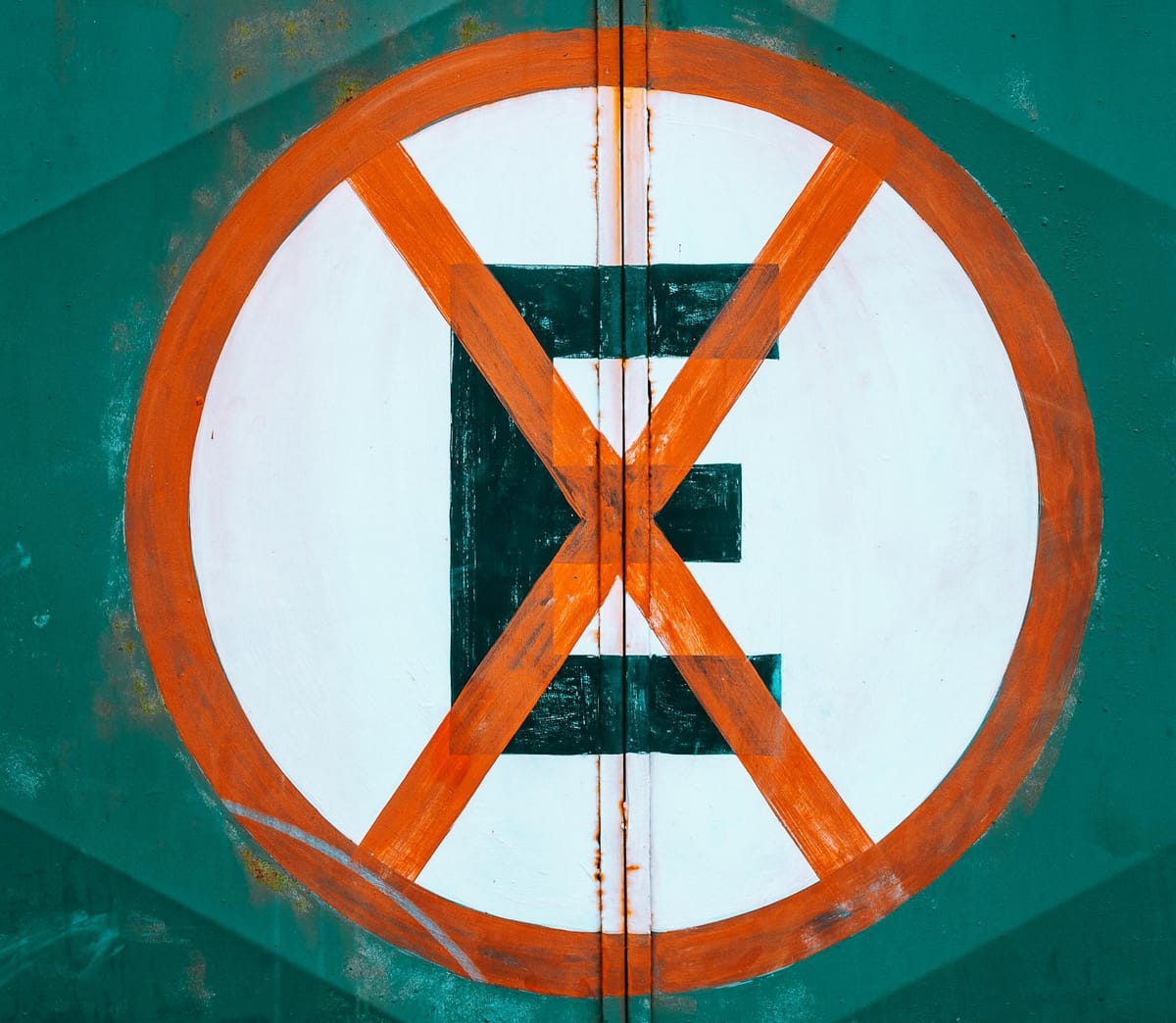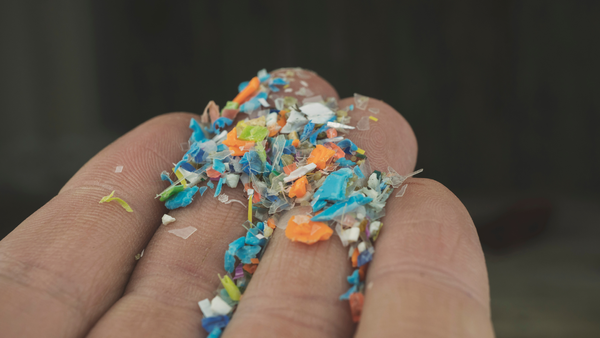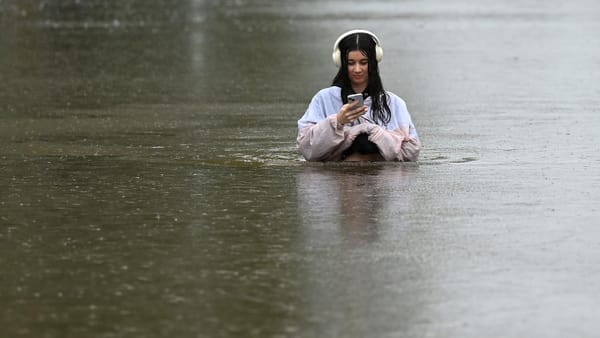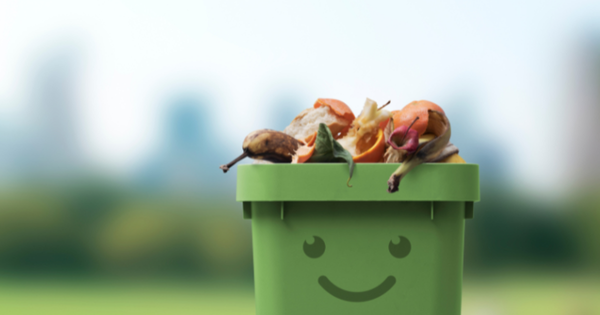There's no such thing as a circular economy
We need to reject the lie that is being fed to us that a circular economy means keeping synthetic waste in play for longer.

That might come across as a jarring headline coming from a circular economy newsletter written by an unabashed circular economy advocate. But it's true. There is no such thing as a circular economy... at least, not in the way it’s being sold to us.
For a closed-loop system (such as our planet) to remain in balance, all waste must be a food source for something else and metabolised without accumulation or resource depletion. Ecosystems fall out of balance when the waste being created grows exponentially, or the ability to process that waste is diminished.
So, the only true circular system is nature itself. But what we do as humans is different. We take materials from nature, alter them, and contaminate them. And when we give them back, we don’t return nutrients. We return waste. Toxic waste.
Then we ship this toxic waste off to developed countries for it to be 𝚛̶𝚎̶𝚌̶𝚢̶𝚌̶𝚕̶𝚎̶𝚍̶, dumped or incinerated—knowing full well that we don't throw anything away, we throw it here.
To understand the impact this 'waste imperialism' has had on these countries and the scale of the lie we've been told bout recycling, I recommend you read/listen to this essay in the New York Times by Alexander Clapp, adapted from his book Waste Wars: The Wild Afterlife of Your Trash.
The great plastic recycling lie
The dream of an industrially closed loop—where plastic, polyester, and other synthetics cycle endlessly without cost—is just that: a dream. Even so-called “sustainable” materials like recycled polyester (rPET) follow the same flawed logic.
They aren’t part of nature’s cycle; they’re part of ours. And our cycle leaks.
"Deep in the highlands of Java, there are hellscapes of imported Western waste — toothpaste tubes from California, shopping bags from the Netherlands, deodorant sticks from Australia — stacked knee-high as far as the eye can see. Too voluminous to even attempt to recycle, it is used as fuel in scores of bakeries that supply Java’s street markets with tofu, a culinary staple. The result is some of the most lethal cuisine imaginable, with poisons from incinerated Western plastic ingested hourly by great numbers of Indonesians". —Alexander Clapp

rPET is often celebrated as a circular solution, but it’s riddled with compromises. Turning plastic bottles into textiles may divert waste from landfills temporarily, but the process itself introduces new chemicals—dyes, finishes, and performance additives that weren’t in the original plastic. And when those textiles are recycled again, breaking them down requires harsh solvents and enormous energy inputs.
Textile-to-textile recycling, a supposed next step toward circularity, can be even worse than bottle-to-textile recycling, simply because of the additional contaminants involved. And let’s not forget that recycled polyester sheds microplastics more readily than virgin polyester due to weaker polymer chains.
These fibers end up in our waterways, our soil, our food. They do not return to nature as nutrients. They return as pollution, with textiles being the largest source of primary microplastics, accounting for 34.8% of global microplastic pollution.

This is the core problem with our so-called circular economy—it isn’t circular at all.
It’s a slower version of the same linear system, where we extract, process, and discard... and another excuse for me to quote Bill Reed (one of the originators of Regenerative Design):
"We're never doing something that is zero damage. So if that's the case, we are still degenerating the planet, and sustainability is just a slower way to die."
The materials we use don’t safely re-enter the biosphere, and they never will unless we rethink our entire approach. Instead of asking how we can make plastic a little less bad, we should be asking how we can stop introducing persistent, unrecognisable materials into nature altogether, especially for our most temporary commodity goods.
Because nature won’t recognise rPET, it also won’t recognise bioplastics laced with synthetic additives. It won’t recognise anything we’ve altered beyond its original biological form.
What does a real circular economy look like?
A true circular economy would work differently. It would mean borrowing from nature rather than extracting and transforming. It would mean designing materials that remain clean—uncontaminated by additives and treatments—so they can return to nature safely. It would mean working with natural systems, not against them.
The central thesis of this publication is that in order to develop a true biocircular materials economy, we need to develop the materials, policies and end-of-life pathways for them to come from nature, and go back to nature.
I've written in previous posts about the kind of materials we need to get behind, such as seaweed-based and cellular-based materials like PHA, paper and fibre-based alternatives, then making sure we get regulations and certification right so that these materials have a scaleable end-of-life pathway via our FOGO systems to become soil.
Even then, all this would just be a start. The first steps.
The future isn’t in making plastic endlessly recyclable, and giving it a second and third chance at shedding microplastics and endocrine disrupting chemicals. The future is in ensuring that what we use can actually go back to nature.
We need to reject the lie that is being fed to us that a circular economy means keeping synthetic waste in play for longer... and start making the case that it means there will be no waste to begin with.





